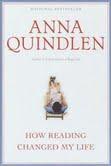Friday Fiction Update: New Title from Jodi Picoult: House Rules
--by Hanje Richards
.
A s so many of Jodi Picoult’s books do, House Rules deals with the medical and the legal and the ethics involved when the two collide. The Copper Queen Library now has this book both in Hardcover New Fiction and in New Audio on CD. As always, if the edition you are looking for is not currently available, you can put it on hold or have someone at the circulation desk put it on hold for you.
s so many of Jodi Picoult’s books do, House Rules deals with the medical and the legal and the ethics involved when the two collide. The Copper Queen Library now has this book both in Hardcover New Fiction and in New Audio on CD. As always, if the edition you are looking for is not currently available, you can put it on hold or have someone at the circulation desk put it on hold for you.
 s so many of Jodi Picoult’s books do, House Rules deals with the medical and the legal and the ethics involved when the two collide. The Copper Queen Library now has this book both in Hardcover New Fiction and in New Audio on CD. As always, if the edition you are looking for is not currently available, you can put it on hold or have someone at the circulation desk put it on hold for you.
s so many of Jodi Picoult’s books do, House Rules deals with the medical and the legal and the ethics involved when the two collide. The Copper Queen Library now has this book both in Hardcover New Fiction and in New Audio on CD. As always, if the edition you are looking for is not currently available, you can put it on hold or have someone at the circulation desk put it on hold for you. .
Jacob Hu nt is a teenage boy with Asperger's syndrome. He's hopeless at reading social cues or expressing himself well to others, and like many kids with AS, Jacob has a special focus on one subject -- in his case, forensic analysis. He's always showing up at crime scenes, thanks to the police scanner he keeps in his room, and telling the cops what they need to do...and he's usually right.
nt is a teenage boy with Asperger's syndrome. He's hopeless at reading social cues or expressing himself well to others, and like many kids with AS, Jacob has a special focus on one subject -- in his case, forensic analysis. He's always showing up at crime scenes, thanks to the police scanner he keeps in his room, and telling the cops what they need to do...and he's usually right.
 nt is a teenage boy with Asperger's syndrome. He's hopeless at reading social cues or expressing himself well to others, and like many kids with AS, Jacob has a special focus on one subject -- in his case, forensic analysis. He's always showing up at crime scenes, thanks to the police scanner he keeps in his room, and telling the cops what they need to do...and he's usually right.
nt is a teenage boy with Asperger's syndrome. He's hopeless at reading social cues or expressing himself well to others, and like many kids with AS, Jacob has a special focus on one subject -- in his case, forensic analysis. He's always showing up at crime scenes, thanks to the police scanner he keeps in his room, and telling the cops what they need to do...and he's usually right. .
But then, his town is rocked by a terrible murder and, for a change, the police come to Jacob with questions. All of the hallmark behaviors of Asperger's -- not looking someone in the eye, stimulatory tics and twitches, flat affect -- can look a lot like guilt to law enforcement personnel.
.
Suddenly, Jacob and his family, who only want to fit in, feel the spotlight shining directly on them. For his mother, Emma, it's a brutal reminder of the intolerance and misunderstanding that always threaten her family. For his brother, Theo, it's another indication of why nothing is normal because of Jacob. And over this small family the soul-searing question looms: Did Jacob commit murder?
..
House Rules looks at what it means to be different in our society, how autism affects a family, and how our legal system works well for people who communicate a certain way -- and fails those who don't.
House Rules looks at what it means to be different in our society, how autism affects a family, and how our legal system works well for people who communicate a certain way -- and fails those who don't.
















































